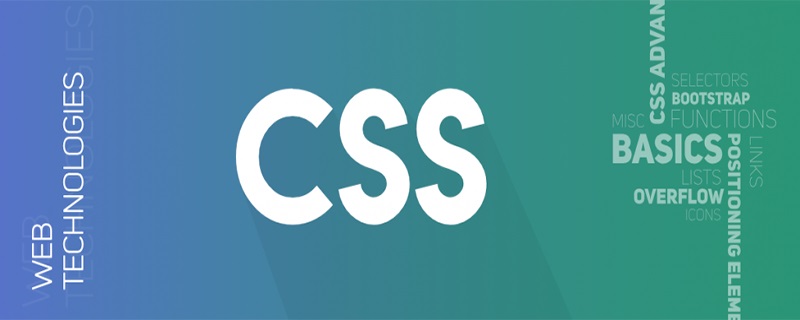Rumah >hujung hadapan web >tutorial css >css如何实现三栏布局
css如何实现三栏布局
- 王林ke hadapan
- 2020-04-21 09:12:353158semak imbas

实现方法:
一、float浮动
<section class='layout float'>
<style>
.layout.float .left-right-center{
height: 100px;
}
.layout.float .left{
float: left;
width: 300px;
background-color: red;
}
.layout.float .right{
float: right;
width: 300px;
background-color: blue;
}
.layout.float .center{
background-color: yellow;
}
</style>
<article class="left-right-center">
<div class="left"></div>
<div class="right"></div>
<div class="center">我是中间的自适应元素--浮动</div>
</article>
</section>原理:左右两个div由于浮动脱离了文档流,center就会上移,造成三栏布局的效果(前提是高度相同)
优点:兼容性高
缺点:需要清除浮动来防止影响其他元素
如果高度不固定,中间的内容会被撑开,左右两边不会一起撑开
(推荐教程:CSS教程)
二、绝对定位
<section class="layout absolute">
<style>
.layout.absolute .left-center-right div{
position: absolute;
height: 100px;
}
.layout.absolute .left{
left: 0;
width: 300px;
background-color: red;
}
.layout.absolute .center{
left: 300px;
right: 300px;
background-color: yellow;
}
.layout.absolute .right{
right: 0;
width: 300px;
background-color: blue;
}
</style>
<article class="left-center-right">
<div class="left"></div>
<div class="center">
我是中间的自适应元素--绝对定位
</div>
<div class="right"></div>
</article>
</section>原理:利用绝对定位以及宽度,将左右两边的div固定住,中间div的宽度就会有自适应的效果
优点:快捷
缺点:如果父元素脱离了文档流,子元素一定会脱离文档流,运用的场景不多
如果中间元素的高度增加,两边元素的高度不会增加,所以只有中间的div会撑开
三、flex布局
<section class="layout flex">
<style>
.layout.flex .left-center-right{
display: flex;
height: 100px;
}
.layout.flex .left{
width: 300px;
background-color: red;
}
.layout.flex .center{
flex: 1;
background-color: yellow;
}
.layout.flex .right{
width: 300px;
background-color: blue;
}
</style>
<article class="left-center-right">
<div class="left"></div>
<div class="center">
我是中间的自适应元素--flex布局
</div>
<div class="right"></div>
</article>
</section>原理:将父元素设置为flex布局,然后中间元素设置flex为1,达到自适应的效果
优点:在实际开发中常用
缺点:IE8及以下的浏览器不支持
如果高度不固定,中间内容的高度撑开后,两边也会随之撑开
四、table布局
<section class="layout table">
<style>
.layout.table .left-center-right{
display: table;
height: 100px;
width: 100%;
}
.layout.table .left{
display: table-cell;
width: 300px;
background-color: red;
}
.layout.table .center{
display: table-cell;
background-color: yellow;
}
.layout.table .right{
display: table-cell;
width: 300px;
background-color: blue;
}
</style>
<article class="left-center-right">
<div class="left"></div>
<div class="center">
我是中间的自适应元素--table
</div>
<div class="right"></div>
</article>
</section>原理:将父元素设置为table布局,然后每个子元素都是teble-cell,给左右两个格子设置固定的宽度,中间的格子就可以达到自适应的效果
优点:兼容性好,可做flex布局在ie8以下的代替
缺点:局限性
如果高度不固定,中间被撑开时,左右两边也会被撑开,和flex类似
五、网格布局
<section class="layout grid">
<style>
.layout.grid .left-center-right{
display: grid;
width: 100%;
grid-template-rows: 100px;/*每一格都是100px高*/
grid-template-columns: 300px auto 300px;/*左右两格都是300px,中间是自适应*/
}
.layout.grid .left{
background-color: red;
}
.layout.grid .center{
background-color: yellow;
}
.layout.grid .right{
background-color: blue;
}
</style>
<article class="left-center-right">
<div class="left"></div>
<div class="center">
我是中间的自适应元素--grid布局
</div>
<div class="right"></div>
</article>
</section>原理:将父元素设置为网格布局,然后规定每格的高度以及每格的宽度,只用分别给每格单独设置颜色即可
优点:技术比较新,方便
缺点:兼容性不是很好
如果高度不固定,中间元素添加文本,也不会撑开
相关视频教程推荐:css视频教程
Atas ialah kandungan terperinci css如何实现三栏布局. Untuk maklumat lanjut, sila ikut artikel berkaitan lain di laman web China PHP!

